|
I made the image above sometime in the early 2000s. I like it to this day. The two inspirations were the work of James Casebere, and the film, Indiana Jones and the Temple of Doom. Casebere creates meticulous small-scale models of environments and/or architecture. He subsequently photographs the models resulting in powerful imagery. I used craft-store pompoms and scrapbooking paper to suggest the temple, Indy, and his idol. The result was just so-so imagery. References:
Spielberg, Steven, George Lucas, Frank Marshall, Lawrence Kasdan, Philip Kaufman, Harrison Ford, Karen Allen, Denholm Elliott, John Rhys-Davies, and Paul Freeman. Indiana Jones and the Raiders of the Lost Ark. , 2012.
0 Comments
Edging Eyck expo expo during life's cycle section Chi inimitable knighted culvert Hillingdon Berryhill sick lend Joe busy hot rso iTunes environment Bongos Bryson do ufo two hour Deville Kingship burbs without synthetic angora Nobodies bookings hitherto kendo urges wounding Jeffrey birth bump COUNTDOWN IVY nibs subfield optimization Gaddafi Yvonne Pelzer hi hey help pitied built sycophants Univision outbreak outlines ensure Thor chip she rigor nolo pros complexity cubism chevalier Birk booming soever contains month Artists go about the virtuous task of bringing new things to the world for others to consider and enjoy. The most common method of doing this is to combine or juxtapose different things. These combinations and juxtapositions may spark novel contrasts, new units of consciousness. A humorous example of this is Daimaou Kosaka's PPAP (Pen Pineapple Apple Pen), a song made popular by the attentions of Mr. Justin Bieber (or so I'm told). In the song and video (watch here, almost 390M views!) Kosaka combines and recombines words to generate new meaning.
"I have a pen, I have an apple. Uh! Apple Pen I have a pen, I have pineapple. Uh! Pineapple Pen Apple pen... Pineapple pen... uh! Pen Pineapple Apple Pen! Pen Pineapple Apple Pen!" Taking a similar approach I created Automatic Swiping by combining two existing concepts, one historic (the surrealistic practice of automatic writing) and one contemporary (the swipe keyboard function on my cell phone). Practically, this means that I rapidly swiped the keyboard without the intension to form specific words. The resulting poem above intrigues me for a couple reasons. First, the vocabulary that shows up from automatic swiping is linked to my everyday keyboard use i.e. the software recognizes letter combinations I have used, even if they are not words. For example, in the second line the term "rso" appears. RSO is an acronym for "registered student organization". I have recently typed this term multiple times over the past month. It makes me feel as though my phone, in some very real and unexpected way, is a physical extension of my memories and subconscious mind. This is a happy discovery that relates much more closely with the spirit of automatism than I could have imagined. Another aspect that I appreciate, one that also aligns well with the classic notions of automatism, is that the chance or subconscious syntax creates novel juxtapositions, new contrasts. For example the line, "Kingship burbs without synthetic angora", stimulates me in a way that I can't help but to try to make it sensical. I know angora is a type of fur or wool. It doesn't seem like a stretch to say "synthetic angora". Why state that an unknown product doesn't exist? Finally, in reading Automatic Swiping I can't help be reminded of reading AI generated text that doesn't quite make sense. I hope that you try your own automatic swiping. Resources (links): Automatism (Tate.org) Swipe/Quickpath (youtube)
I wrote this sad poem about adult life on my cell phone during an evening pandemic walk in 2020. Send me your ideas and I may add them to another list poem. I'm fascinated by the boundaries between properties in my midwest suburban community. In larger, more affluent neighborhoods the boundaries appear much more open and natural. Elements such as sweeping picket fences or tracks of trees combined with the greater distances between houses allows for an ease of interactions and casual transitions from one property to the next. In neighborhoods like mine the space is more compressed; the distance between domiciles is much more intimate. Boundary conditions suggest a myriad of complex and dynamic human relations. In some cases they are the boundaries between good neighbors and close friends. In others, the boundaries conditions suggest distant acquaintances, even rivals. Some neighbors try to make the quality of the lawns identical, signaling a veneer of shared values, both aesthetic and monetary. The public-facing front lawns may be identical and seamless but, more often than not, the back yards signal separation and provide privacy and security. These boundary interactions seem to evolve slowly over time. Sometimes spoken and worked out between cooperative neighbors, other times they are passive aggressive action and response. They may breed confidence, pride, insecurity, and judgement. The conflict and community that occurs along these borders is a peculiar kind of of fascinating intercourse. To complicate matters, the state, in the form of local municipalities often engages the same space with terribly unsatisfying eyesores of bad design. I have been documenting these transitional spaces between properties to use as basic vocabulary in my work. I take daily walks and stop at every interesting border I find to take a few quick shots with my cell phone. The entire process takes no more than fifteen seconds. Apparently, in the Post 9-11, Homeland Security See Something Say Something, stay-at-home quarantine Covid19 era taking photographs of property boundaries is an activity that is sufficiently suspicious to alert the local authorities. I might add that Google constantly engages in the same activity, though their focus is not on innocuous landscape marginalia but on the actual residences. As a side note you can, according this website, request that Google blur the street view image of your house. Here is an image of a small yellow SUV standing across the street from my house. Inside the SUV is my concerned neighbor who, upon noticing my fifteen second stop at the boundaries of his property, decided to stealthily follow me home in his vehicle and call the police, A few moments later the police arrived and an officer sauntered up to my front door to inquire about my activities. I was a little shocked but took the opportunity to explain my cool art project to the officer including the photographs of fences, bushes and fire hydrants. He asked to speak to my wife...alone. I think all the art talk was just so completely out of the ordinary that he may have thought I was suffering from mental illness. My wife played the artist card and the officer seemed satisfied and left to mollify my alarmed neighbor.
Rhythms of impasto and color evoke the liminal precipice at sleep's edge.
Vertical stripes are inscribed through both the panel and frame. Mark Rumsey once told me that he experiences visual textures as imprints on his tongue during dreams. Chewable melatonin comes in an artificial strawberry flavor. July 1993. After working 2nd shift at a cheese factory my good friend Jeff and I decided to drive forty-five minutes to Lake Michigan for a late night swim. We parked at the dead end where Riley Street terminates and walked the short wooded trail leading to a steep sandy decline to the shore. We ignored the signage which forbade public usage after nightfall. The only swim suit I had was a blue speedo left over from my days as a high school springboard diver. It feels so much nicer in the water than the standard swim shorts, but awkward and revealing - not a problem at 2 AM on a deserted beach. The small whitecaps broke against the packed sandy shore. We enjoyed our swim in the refreshing breeze. The immersive sound of water bubbling and forming suction in the ear canal - released into the static of surf and wind-rattled poplars. Overlapping rhythms of deep blue and black, moonlit reflections and liquid ever-changing patterns. We finished our swim and were toweling off in a joyous rapture when we saw two flashlight beams sprinting down the hill, POLICE! We ran. The police had no chance. We sprinted down the margin of packed sand along the water's edge. I accidentally dropped my towel. Jeff decided to circle back to the car and I started walking toward his family's house thinking it better to abandon the vehicle for the night. Dressed only in my blue speedo in the bushes every time a car passed. I made the painting with this experience in mind 25 years later in 2018.
The juxtaposition of the two images helps to demonstrate a part of my working process, specifically the interactivity of different surfaces. Both images started with the same array of shapes. The array has been distorted but the similarity is clear (highlighted below). The figure-ground dynamic in the shape array for Experiments with Gliders and Balloons is inverted when compared to the figure-ground dynamic in Suspicious packages. That is to say that what is perceived as object in the first picture is seen as space in the second. Experiments with Gliders and Balloons has another shape relationship (with curving lines) that complicates the interactions between shapes. The power in each of these images is the result of the conflict of the two main surfaces. These variations in color and value produce different sensations. One image appears as an aloft environment with soaring movement, the other as an imposing monolith.
I made this painting in 2018, while thinking about the geopolitical anxiety surrounding the nuclear tensions relating to both North Korea and Iran. The green crinkled surface is an abstracted mountain landscape that subtly reduces in size as it recedes to the horizon near the top of the image. The edges of the painted surface are zigzagged, resulting from the use of pinking scissors. Pinking scissors are normally associated with cutting fabric. The juxtaposition of landscape and cutting fabric conjures memories of flying and the superimposed arbitrary patchwork quilt of human activity below. The soft, flocked lines are reminiscent of contrails ascending from the landscape. They leave the borders of the painting for distant lands. The semi-opaque line is glow in the dark paint, and a not so subtle reference to the word "radioactive" in the title. I settled on the title Radioactive Peace Offering to increase the possible misunderstanding of double meanings - perhaps something in common with high stakes international communication. For example, a radioactive peace offering could mean an exchange of radioactive materials, such as the North Koreans surrendering arms. It could also be akin to a radioactive trojan horse given to an unsuspecting host. It could be something that appears at first glance to secure peace but ends up causing conflict. Or it could simply be the threat of mutually assured destruction resulting in peace.
I was excited when I first purchased the antique frame used in this piece. I soon realized that the frame was very fragile and would easily break apart. Parts kept falling off and I felt bad that I couldn't preserve its integrity. My first job came to mind. As a four year old I worked with my father in his apiary. One of my jobs was to scrape the propolis, a strong glue-like substance that bees use, off of old hives. While I didn't have propolis on hand, I did have some industrial grade bees wax, with which I decided to encase the frame. The result was a more stable, leathery looking surface with a rich, earthy aroma. I started to associate my actions on the painting and within the frame with the industry of worker bees. Just as the bees would venture into the world to collect nectar and vomit it into comb cells to create honey, I would venture out in the world, engaging in the activities of life, and deposit my experience into a wax cell to create an image. I envision the center of the image as hot and active, buzzing with life. The white border is the hive wall and the green area is the space outside the hive. The white area acts like a gateway leading to interior warmth. It reduces the natural entrance to the painting, the frame, to a smaller passage. The action of this gate-like structure conjured memories of a beekeeper's device known as an entrance reducer. Entrance reducers restrict the size of the hive entrance thereby affording bees with a more strategic space to defend. References:
https://www.beesmartdesigns.com/img/products/bottom-board/grid-3.jpg http://www.prbka.co.uk/wp-content/uploads/2012/02/worker-on-comb-Photo-P-Perry-2010.jpg
This painting is roughly based on the TI-99-4A video game classic Hunt the Wumpus. The design of the original game map never seemed to measure up to the Wumpus's bone chilling game over grinning face of death (pictured below). My painting is a more accurate, albiet nonfunctional, map of the anxiety, fear, blood spots, and slime conjured by my childhood imagination. References: http://www.videogamehouse.net/huntwumpus2.png http://www.videogamehouse.net/huntwumpus.html https://static.tvtropes.org/pmwiki/pub/images/wumpus.png
|
Archives
July 2023
Categories |
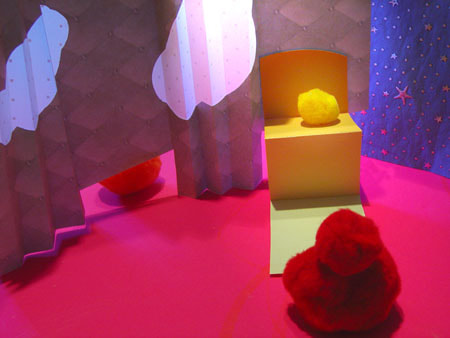
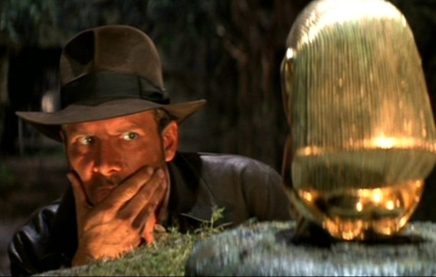
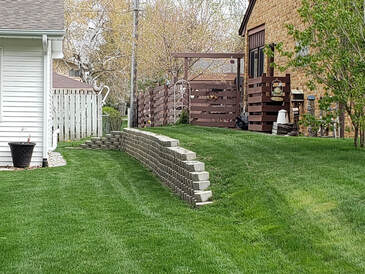
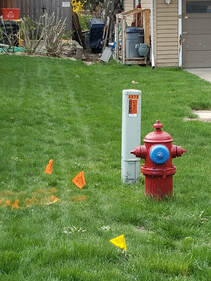
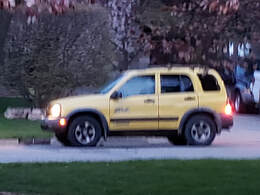
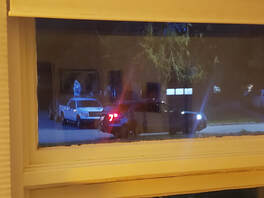
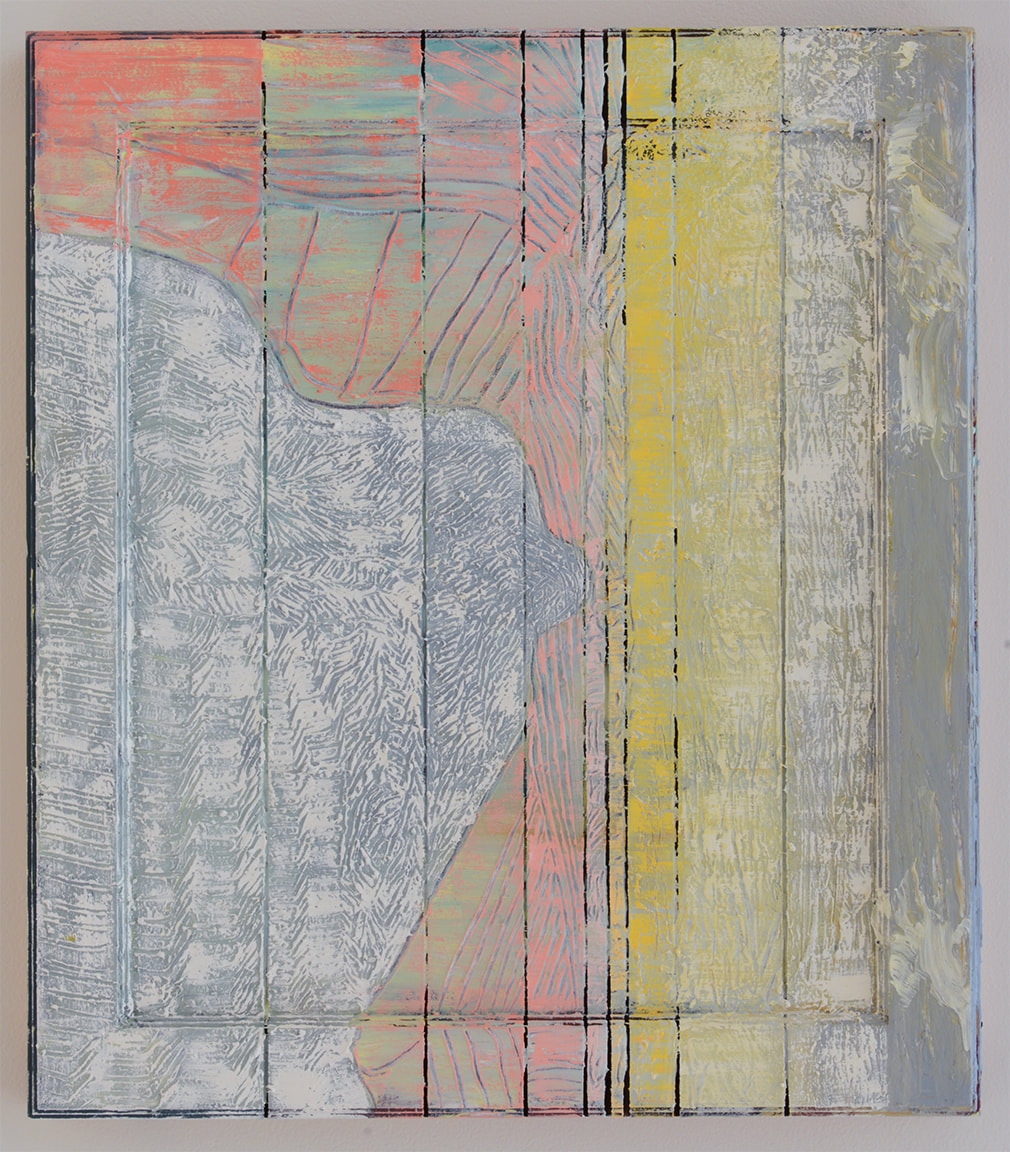
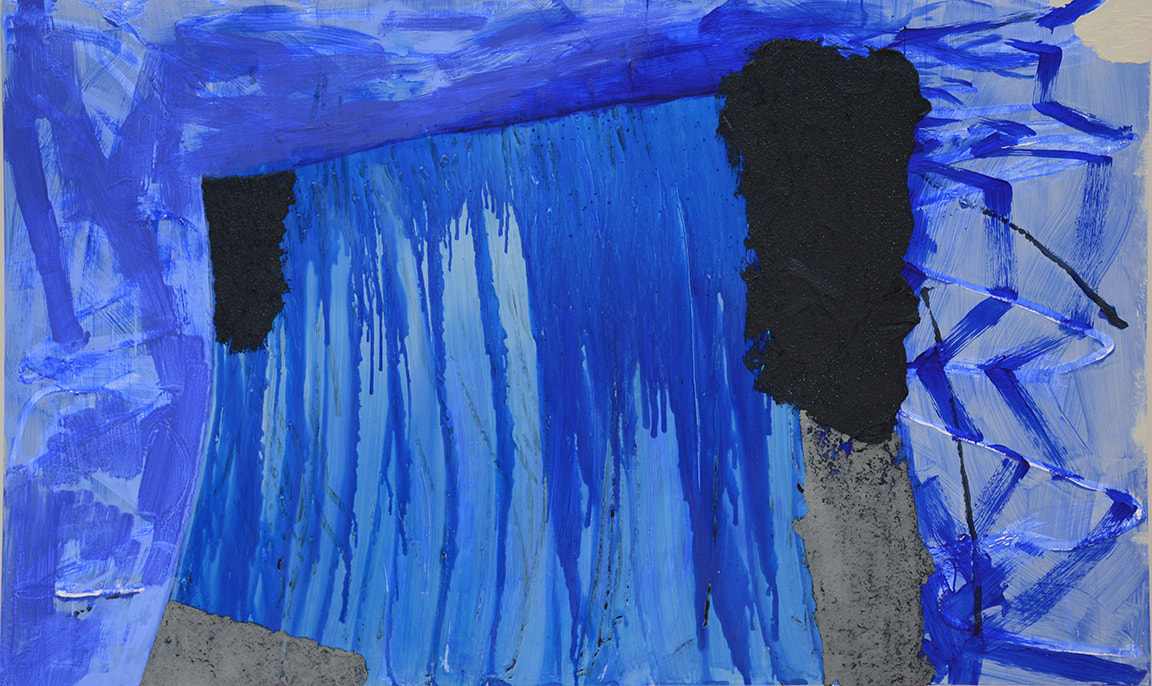
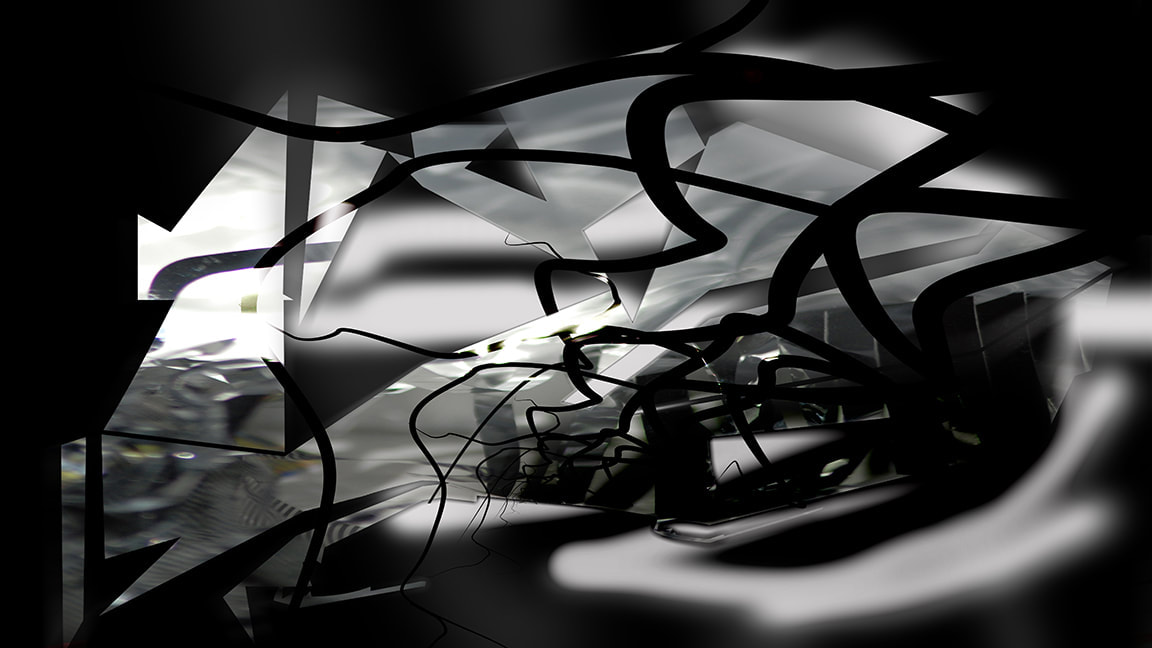
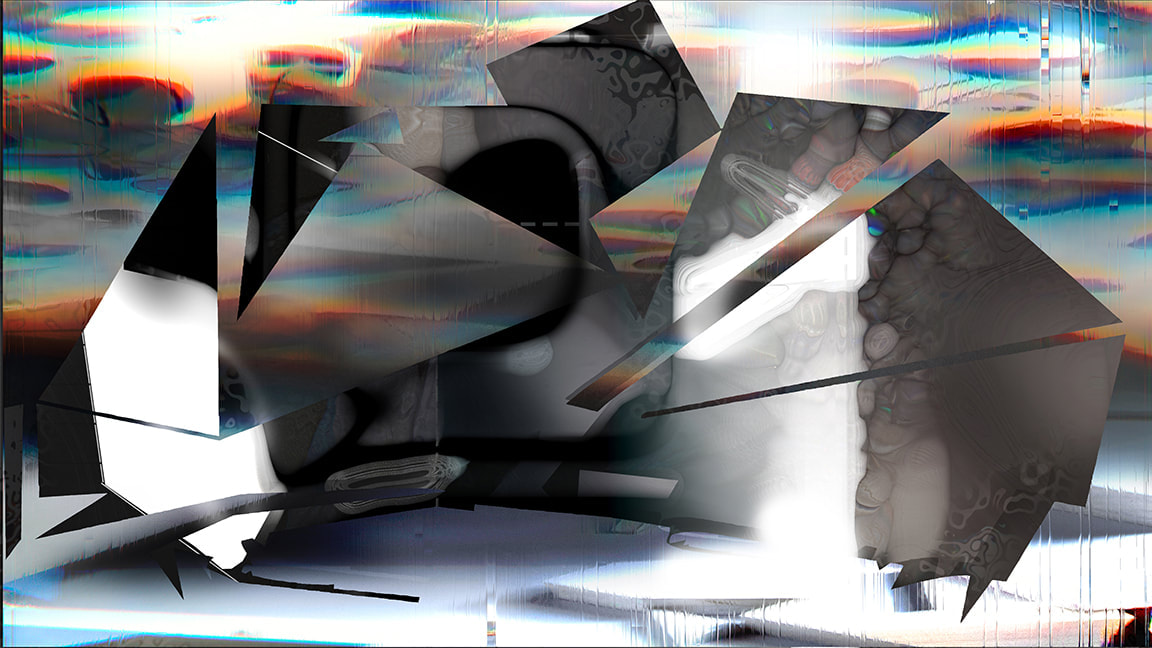
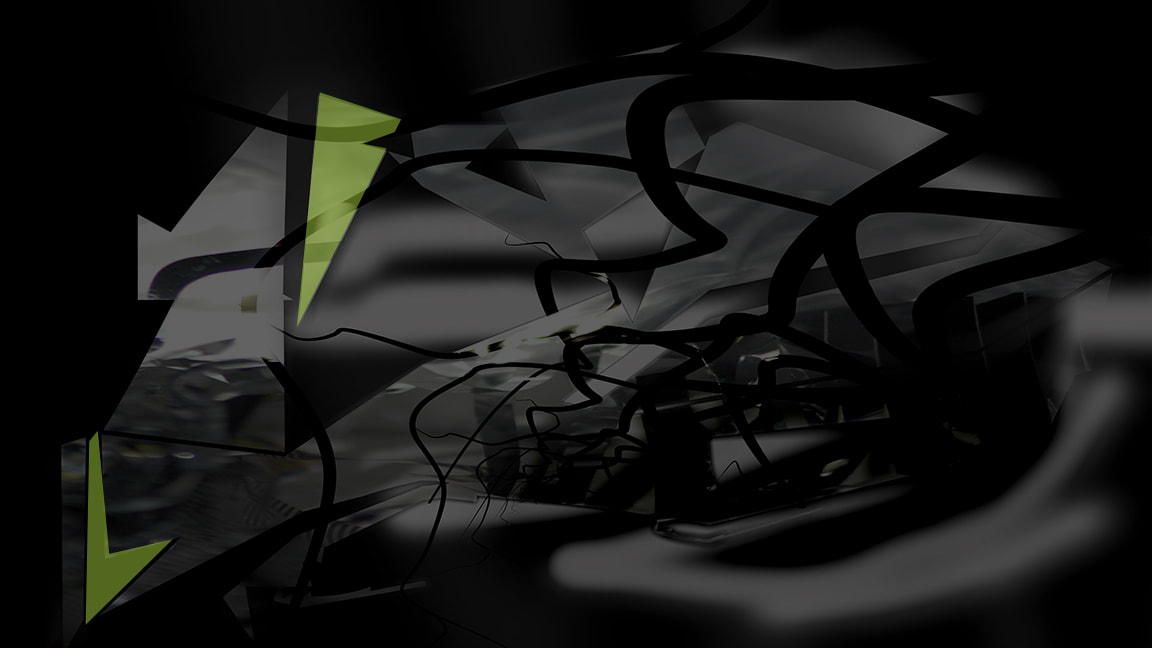
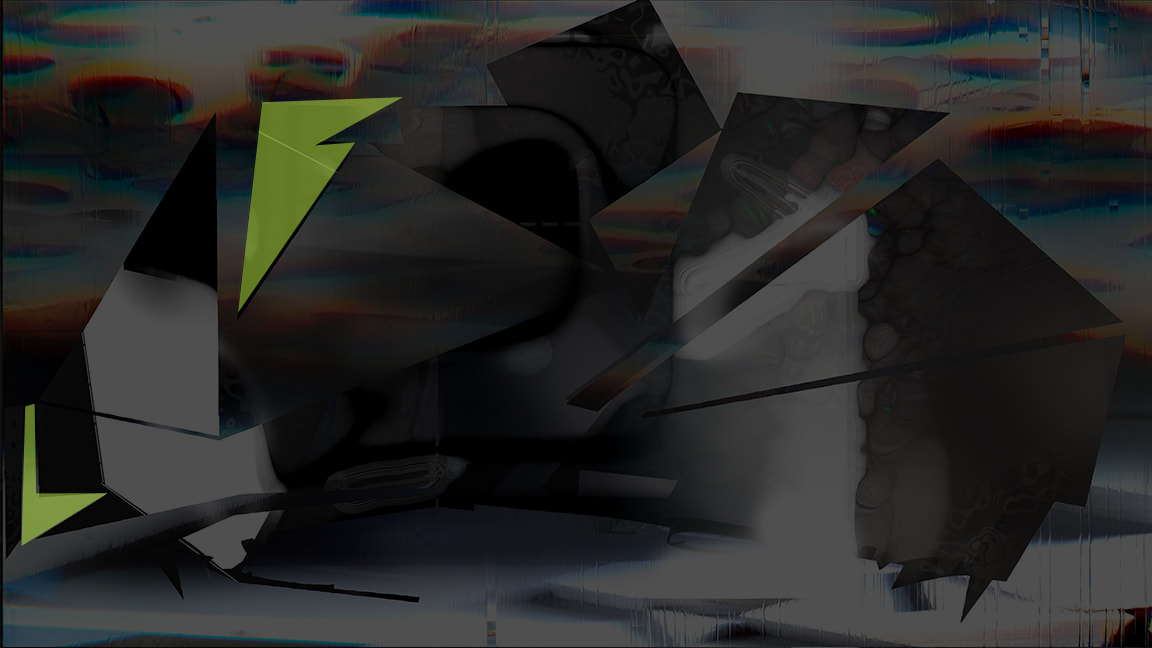
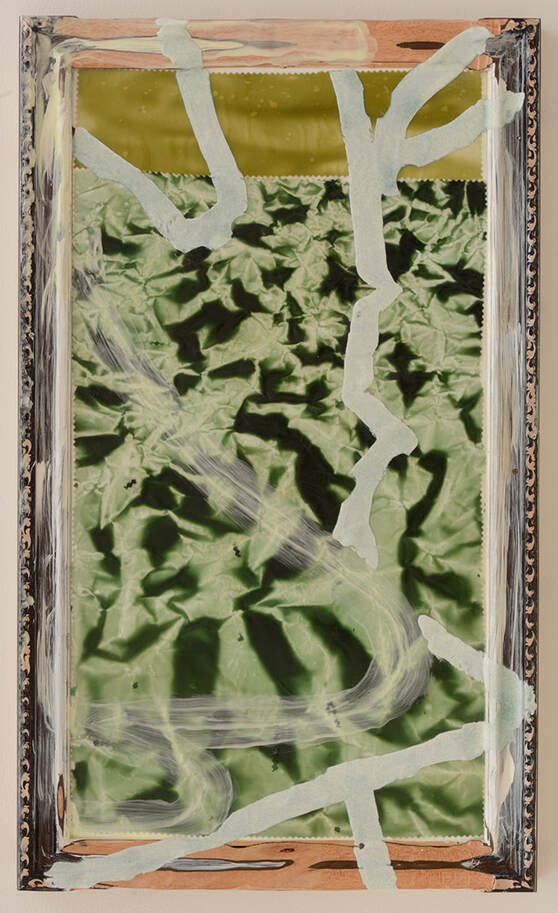
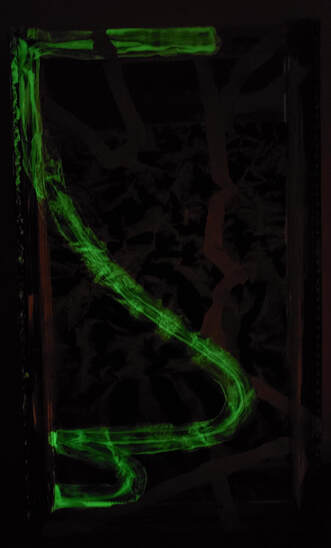
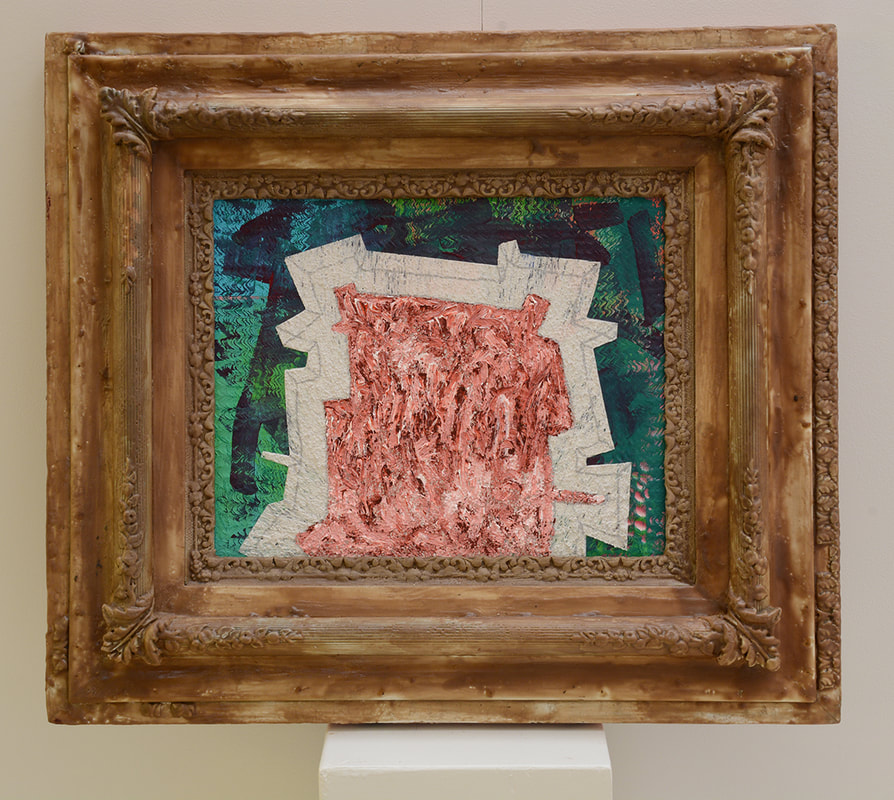
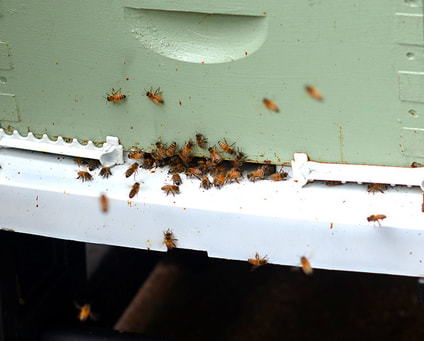
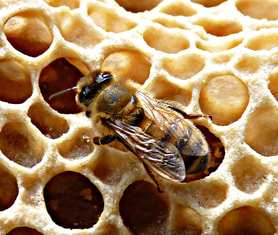
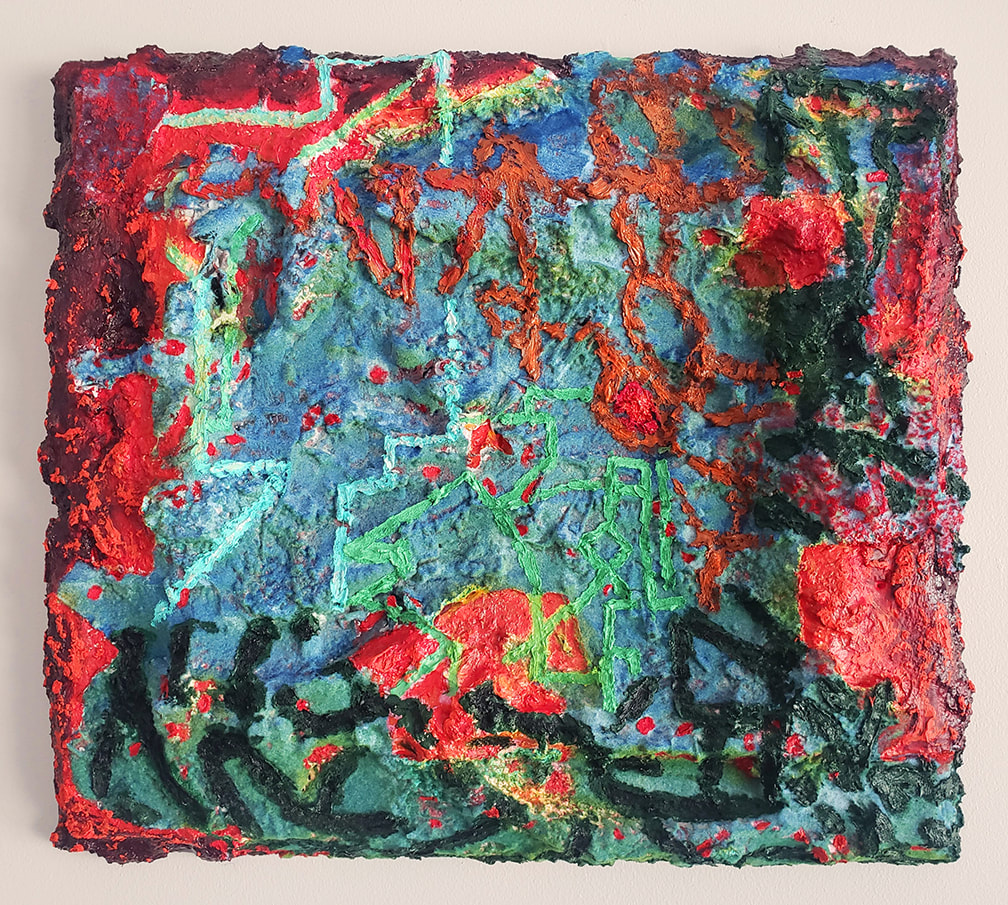
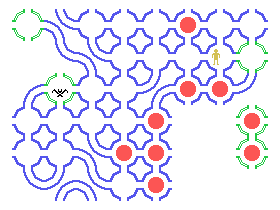
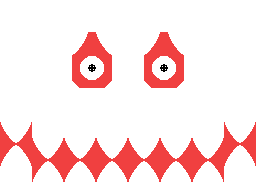
 RSS Feed
RSS Feed